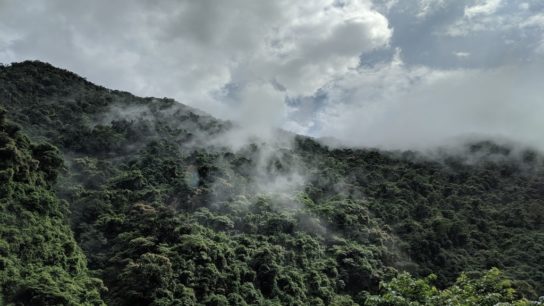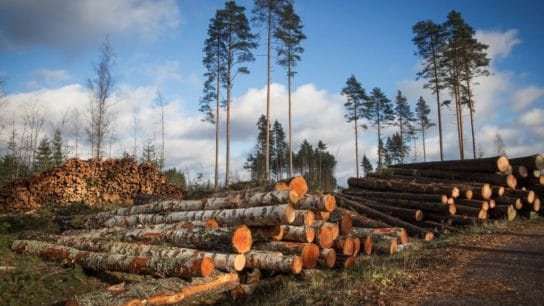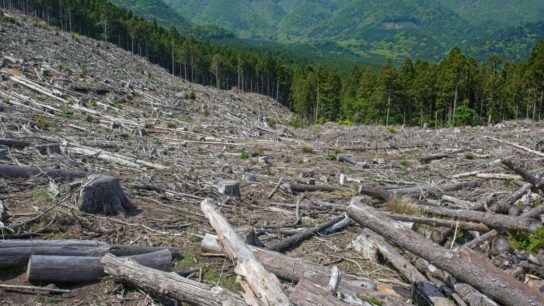The Chipko movement, a grassroots environmental movement that originated in the Indian Himalayas in the 1970s, holds a profound historical significance. This article delves into the origins and explores the deeper meaning behind this iconic movement that embraced tree-hugging as a form of protest against deforestation and the exploitation of natural resources.
—
Five decades ago, women from the Himalayan villages of Reni and Mandal in India used their bodies to shield trees from loggers in a desperate attempt to protect their indigenous land, ecosystem, and livelihood. The locals depended on the fodder, fuel, and fibres provided by nearby woodlands that contributed to daily sustenance. The government’s exploitation of natural resources, reckless deforestation, and destruction of wildlife had devastating environmental repercussions in the villages. Led by village leader Gaura Devi, the protest asserted local people’s rights over their resources.
By the 1980s, the women’s peaceful resistance birthed the first ecofeminist movement of its kind that became known across India as the Chipko Andolan – or Chipko movement. Chipko is Hindi for “to cling” or “to hug”. Eventually, these women’s aim to protect India’s forests evolved into a green movement that continues to persist amid the rapidly accelerating climate crisis.
The Roots of Chipko
The story of Chipko was inspired by Amrita Devi from the northwestern state of Rajasthan. In 1730, Amrita bravely resisted the orders of the Maharaja (Sanskrit title for “great ruler”) of Jodhpur to cut down trees in her native Khejarli village. 363 members of her tribe were beheaded as they hugged the trees to prevent them from being cut. Following the massacre, the Maharaja introduced a ban on cutting down trees in the area.
Although the Chipko resistance began with and was led by women, two men – Sunderlal Bahuguna and Chandi Prasad Bhatt – contributed to popularising the movement.
In the 1970s, devastating floods and landslides in the Alaknanda Valley destroyed many small villages and left the residents questioning what caused them. Speaking with Dialogue Earth, 89-year-old Bhatt, a Gandhian environmentalist and social activist, said: “To understand the reasons behind the floods, we walked to many places and found out that wherever the forests were cut, the impact of floods was severe.”
His observations contributed to raising awareness among residents about the fragility of the region’s environment and stepping up efforts to protect the forests to protect themselves from future floods and landslides.
A report by Virendra Kumar, a naturalist and professor at the Department of Botany at the University of Delhi later confirmed the women’s apprehension. Kumar, who also headed the commission to probe the Chipko unrest, called for a complete ban on hacking down oak and rhododendron trees in the region, stressing the deep ecological degradation that the region was experiencing.
Bahuguna was another renowned environmental activist who had a tremendous impact on India’s environmental policies, including the preservation of forests and other natural resources in the Himalayan region. He was instrumental in bringing the Chipko movement to prominence through his 5,000-kilometer trans-Himalayan padayatras, also known as journey on foot in English, between 1981 and 1983. Bahuguna spread the message to every corner of India through folk songs, marches, and slogans, including: “What do the forests bear? Land, water and fresh air!”
As a true disciple of Mahatma Gandhi, Bahuguna’s padayatras was a long journey intended to connect with other environmentally vulnerable communities and to galvanize national support towards the Chipko movement. The movement was pivotal in making the local communities self-sufficient and making them recognise the importance of safeguarding their natural environment for their livelihoods with their forests by planting trees, growing fodder plants for livestock, building check-dams and more.
At the end of his march, Bahuguna met with Indian Prime Minister Indira Gandhi, who then passed legislation to protect some areas of the Himalayan forests from clear-cut logging.
The Wave of Chipko Across India
In 1975, Chipko led to the formation of Van Nigam, a state-owned forest corporation that took over all forms of forest exploitation from private contractors. In the Kumaon division of the northwestern Indian state of Uttarakhand, the movement gained its momentum following major landslides at Tawaghat in 1977, succeeding in blocking forest auctions at several places, including in the small towns of Nainital, Ramnagar, and Kotdwar.
That year, Chipko activists led by Bahuguna opposed tree-felling in the Henwal valley in Uttarakhand’s Tehri Garhwal district. Pratap Shikhar of Jajal, a Chipko activist during the 1970s, noted that this transformed Chipko from a form of economic struggle to a fight for conservation. The Chipko movement generated enough pressure for a more responsible and inclusive natural resources policy in India.
The movement was crucial in the amendment of the 1927 Forest Act, which increased community involvement and strengthened local conservation efforts. However, the first major success of the movement was pressuring the Indira Gandhi government to enact the 1980 Forest Conservation Act. The new policy aimed to limit deforestation and to conserve biodiversity in the region, with a ten-year ban on green felling growing at over 1,000 meters above sea level in the northwestern Indian state of Uttarakhand. Following that, India’s Supreme Court imposed a ban on felling trees in the northern states of Uttar Pradesh and Himachal Pradesh in 1996, which continues to this day.
Downfall and Chipko in the Present Day
Even though the movement brought about commercial deforestation in India by protecting it from loggers, the grassroots people’s primary vision for economic development was ultimately taken away by the complete prohibition on tree cutting in Uttarakhand, which effectively prevented people from developing forest-related industries in the area. For this reason, Chipko activists like Shamser Singh Bist feel that the movement failed in its purpose.
“Chipko was essentially an economic campaign, a fight for local livelihood and when this was not achieved, the people became disillusioned. Now, even their traditional rights have been taken away and the forest guard is supreme,” Bist told Down to Earth.
Shekhar Pathak, another Chipko activist and a lecturer at Kumaon University, offers a different perspective.
“The major failing of Chipko was its refusal to recognise its political dimensions. Political organising – both at local and national level – and electoral politics are necessary for a movement of this kind. But when politicisation was attempted, especially by the youth who came into the movement, the Sarvodaya workers dissociated themselves from it,” he said in an interview with Down to Earth.

Activists like Pathak who believed politicisation was necessary for Chipko did not understand that the movement failed to have a unified vision to begin with. Demands for the villagers to “own rights to manage their forest for their use” were not always at the forefront of the movement. Rather, for Chipko activists like Bahuguna and Bhatt, their primary focus was on protecting the forest trees from commercial loggers and destroying the notion that the grassroot communities are heedless of their natural environment.
Despite these challenges, the Chipko Movement significantly transformed forest management systems and sparked a network of social activism both in India and worldwide. International ecologists viewed the movement as a cultural response reflecting people’s deep connection to their environment. As a grassroots initiative, it empowered communities by fostering a sense of ownership, advocating for inclusive decision-making processes, and upholding the rights of marginalised populations.
By spreading its simple yet powerful message of tree-hugging to protect forests, the principles of the Chipko Movement resonate with modern-day climate action movements. Chipko went on to inspire other global environmental activists, including the Swedish activists’ environmental movement of 1987 and the protest to protect forests in Mount Takao by Japanese citizens in 2008, which was also based on nonviolent methods such as tree-hugging.
The movement challenged the conventional notions of development, which prioritises economic growth over environmental health. Chipko served as a slow awakening as it seeped through the valleys and forests of India, and continues to inspire in the present era. Although the movement began as a hugging-of-trees protest, its principles continue to inspire and guide contemporary efforts in protecting the environment, upholding marginalised communities’ rights, and bringing new ecological movements across India and the rest of the world.
Featured image licence: CC BY SA 4.0















